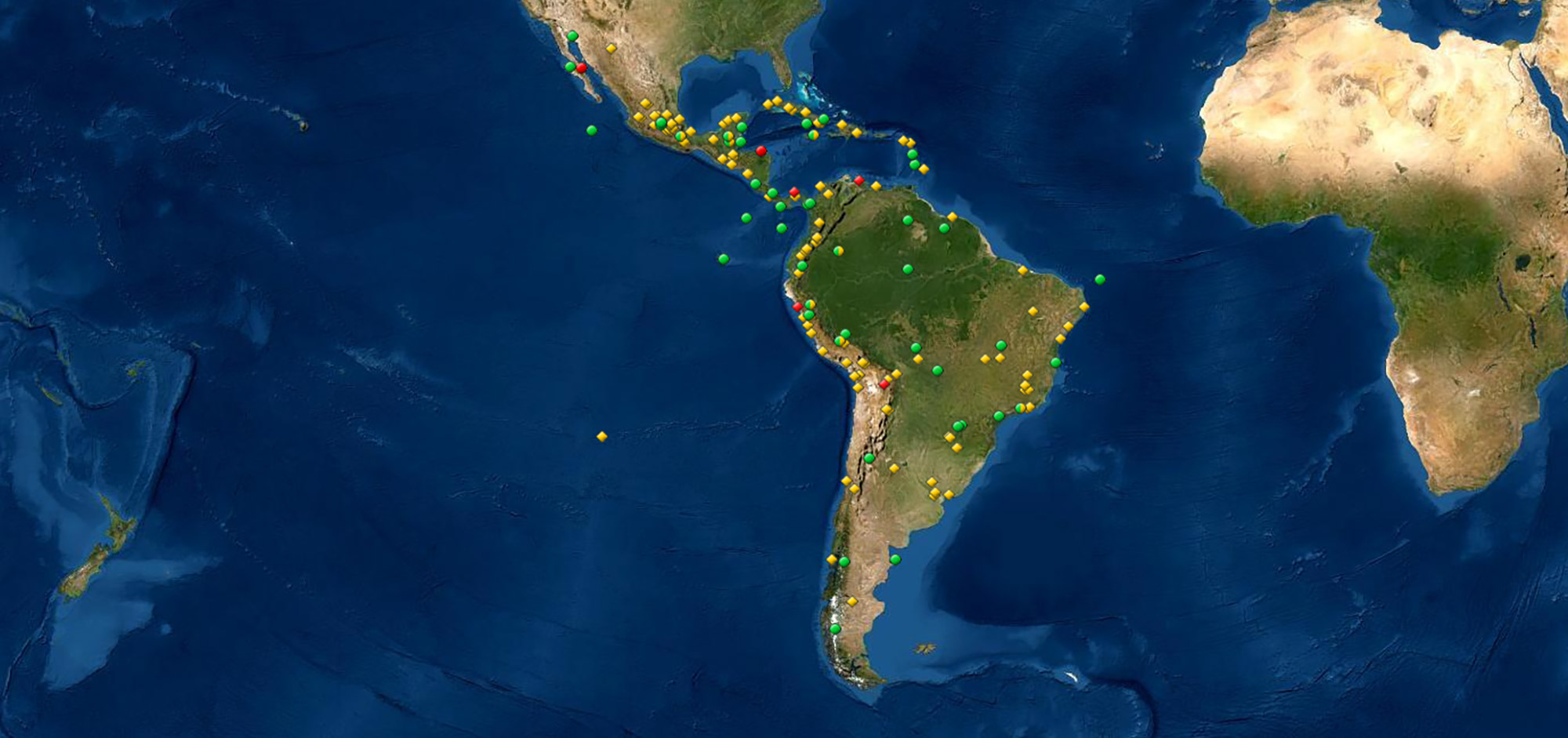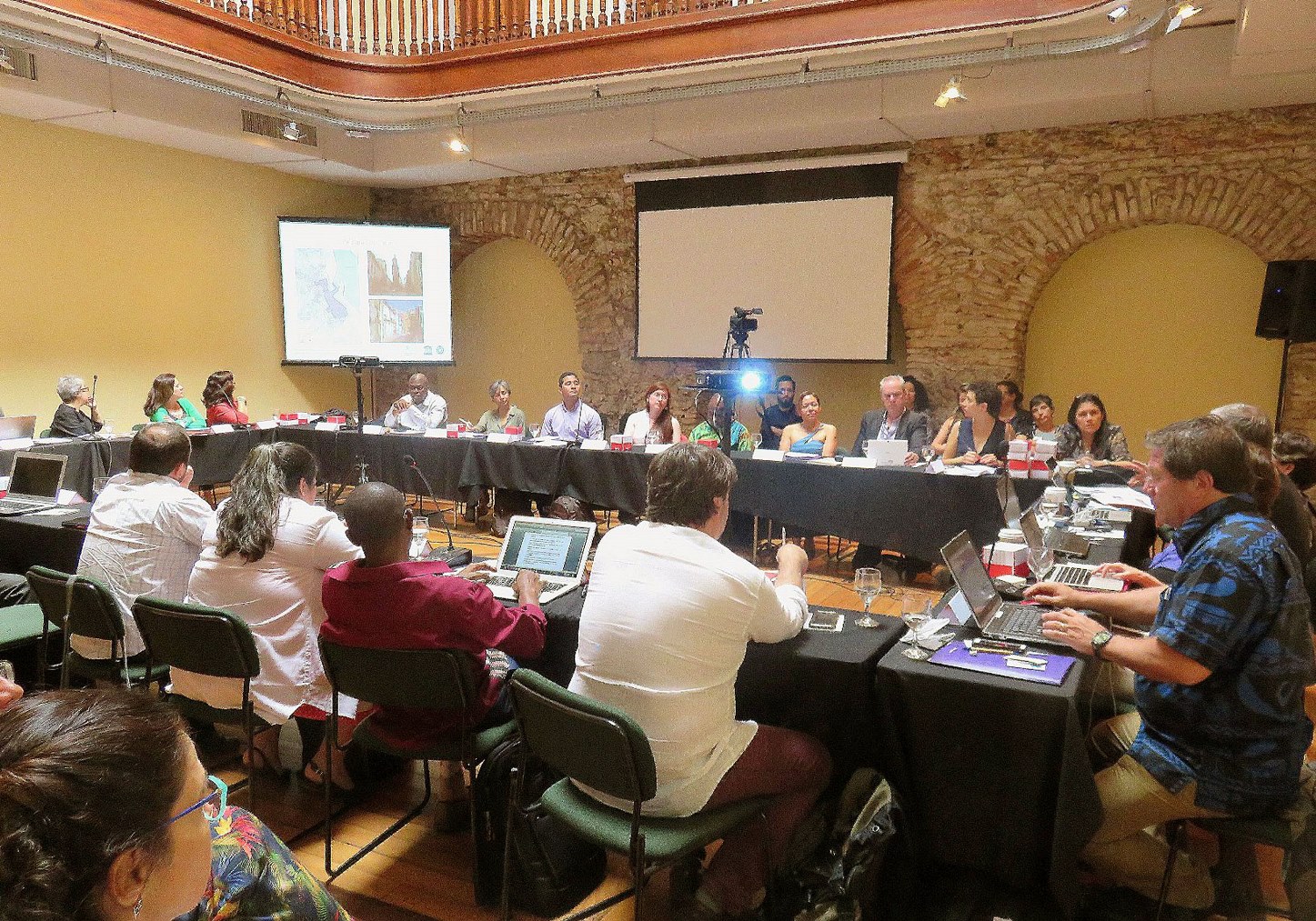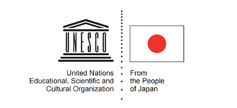From archaeological pre-Hispanic sites, exceptionally well preserved historical centres, breath-taking natural sites with exquisite, biodiverse landscapes, the Region’s World Heritage serves as a basis for further strengthening sustainable development and the role of local communities which is vital for heritage protection and management.
A well protected World Heritage site contributes directly to environmental, social and economic development and helps better the life of the local community. This process constitutes a great challenge for the years to come, both for the State Parties to the Convention and for UNESCO.
Cultural Properties
Mixed Properties
Natural Properties
Transboundary properties
Properties in Danger
Periodic Reporting
The Periodic Reporting process in the Latin America and the Caribbean Region
Third Cycle (2021) and Action Plan for Latin America and the Caribbean (2023–2029)
The 3rd cycle of Periodic Reporting for Latin America and the Caribbean was launched in October 2021. It involves all properties inscribed on the World Heritage List from the region, including those inscribed by the Committee at its Extended 44th session of the World Heritage Committee in July 2021.
The Third cycle of Periodic Reporting for Latin America and the Caribbean was launched in October 2021. It involves all properties inscribed on the World Heritage List from the region, including those inscribed by the Committee at its Extended 44th session of the World Heritage Committee in July 2021.
The objective of the Periodic Reporting is to highlight the work made by all the actors involved in the management and conservation of the sites and have a clear picture on how the World Heritage Convention is being implemented at national and local levels.
Guidance and Training Tools (English and Spanish) have been prepared to facilitate the filling up of the two Sections of the Questionnaire for the Third Cycle by National Focal Points and World Heritage Site Managers.
The Third Cycle of the Periodic Reporting for Latin America and the Caribbean resulted into the inclusive, participatory elaboration and draft of the Action Plan for Latin America and the Caribbean (2023–2029), which was formally adopted by the World Heritage Committee at its 45th-extended session. The Action Plan includes five strategic objectives:
- Strengthen the representativity and credibility of the Latin America and the Caribbean diverse heritage in the World Heritage List;
- Reinforce effective management for the conservation and promotion of World Heritage in the region;
- Develop and implement capacity-building for innovative approaches to conservation, management and promotion of World Heritage;
- Enhance better use of heritage education, communication and awareness-raising formulas for the protection of World Heritage;
- Reinforce community participation and stakeholder engagement for effective management of World Heritage properties.
A set of expected results, activities and performance indicators are connected, in the Action Plan, to each of the Strategic Objectives.
Download Action Plan Download Action Plan in SpanishDownload Report
Second Cycle (2013)
The objective of the Second Cycle was to the strengthen State Parties' capacities in order to contribute to the completion of the Retrospective Inventory exercise and the Retrospective Statements of Outstanding Universal Value for World Heritage properties in the LAC Region. Its official launch took place during the 35th Session of the Committee in 2011.
First Cycle (2004)
The First cycle was implemented in accordance with the World Heritage reporting mechanisms (1998) and the strategic objectives of the Convention (2002). This report constitutes the first periodic report on the state of World Heritage in the LAC Region and was examined by the World Heritage Committee at its 28th session (Suzhou, 2004).
As follow up of Decision 37 COM 10A adopted by the World Heritage Committee at its 37th session (Phnom Penh–2013) and based on the results of the 2nd cycle of the Periodic Reporting exercise, the LAC State Parties, in close cooperation with the World Heritage Centre, the Advisory Bodies and Category 2 Centres developed regional and sub-regional Action Plans. When the Third Cycle is concluded, a new Action Plan for the Region will be developed taking into consideration the results obtained.
Action Plans
At its 38th session (Doha, 2014), the Committee congratulated the LAC State Parties for their efforts and adopted the Action Plan for World Heritage in Latin America and the Caribbean 2014-2024. The Committee further encouraged State Parties to continue working with the World Heritage Centre, the Advisory Bodies and the Category II Centres to develop sub-regional action plans (Decision 38 COM 10B.4)
Regional Action Plan
As follow up of Decision 37 COM 10A adopted by the World Heritage Committee and based on the results of the 2nd cycle of the Periodic Reporting exercise, the LAC States Parties, in close cooperation with the World Heritage Centre, the Advisory Bodies and Category 2 Centres, developed the Regional Action Plan (PARALC, 2014-2024) to address the key challenges and priorities regarding World Heritage across the region.
Sub-regional Action Plans
By Decision 38COM 10B.4, the Committee encouraged the States Parties to continue working, in close cooperation with the World Heritage Centre, the Advisory Bodies and the Region’s Category 2 Centres, to develop sub-regional action plans, based on the Action Plan for World Heritage (PARALC 2014-2024) and building upon the achievements of the previous plan with a focus on the specific needs of each sub-region.
Capacity Building
Strategic Objective for the implementation of the Convention
The Second cycle of the Periodic Reporting exercise identified the lack of management capacity and expertise as one of the pressing needs in some countries from the region preventing them from ensuring better protection for the World Heritage sites within their territory. In this context, the Regional Action Plan (PARALC 2015-2024) outlines a Capacity Building Strategy (EFCAS) in order to support the Category 2 Centres in the Region in elaborating Capacity Building strategies and programmes tailored to the specific needs of the 3 LAC sub-regions (Mexico and Central America, the Caribbean, South America) aiming to address their most urgent requirements.to support the implementation of the World Heritage Convention.
Extra-budgetary Projects
The projects financed with extra-budgetary resources form an essential part of the Action Plan of World Heritage for the Region. They support several conservation and management activities, which cannot be supported only with regular budget funds, and which tackle key priorities for the Region.
Thanks to these donors and partners, WHC-LAC is able to enhance its action regarding conservation, management, technical assistance, seminars, workshops, training courses, database creation and others.
LAC UNESCO field partners
Field offices
Conservation, protection and capacity building activities in the region are carried out through reinforced cooperation among the State Parties, the World Heritage Centre, the Advisory Bodies and UNESCO Offices in the field. The network of field offices plays an essential role in the implementation of specific activities.
Category II Centres
Created in order to assist and support the State Parties of the three LAC sub-regions to implement the 1972 World Heritage Convention. Two centres have been created: the Category II Centre “Lucio Costa Regional Training Center in Cultural Heritage Management (CLC)” for the South American sub-region, and the Category II Centre “Regional World Heritage Institute in Zacatecas (RWHIZ)” for Mexico, Central America and the Caribbean.
- Periodic Reporting 2nd Cycle : Latin America and the Caribbean (2013)
- Caribbean Capacity Building Programme (CCBP)
- Category 2 Centres (LAC)
- Culture and Development: World Heritage in the Caribbean
- Disaster Risk Management Plan for Quebrada de Humahuaca
- Fortifications and the World Heritage Convention – Valdivia Chile 2004 and Campeche Mexico 2005
- Periodic Reporting 1st Cycle: Latin America and the Caribbean (2004)
- LAC Action Plan
- LAC Extra-budgetary Projects
- Visitor management training kicks off in Mexico for Latin America and the Caribbean World Heritage sites 19-Jun-2024
- Community Leadership, UNESCO, and Honduran Organizations Join Forces to Preserve the Maya Site of Copán in Honduras 16-Feb-2024
- First steps towards a risk management plan in Paraguay's Missions 14-Feb-2024
- UNESCO concerned over fire in Argentina’s Los Alerces National Park 29-Jan-2024
- Launching of the Action Plan for Latin America and the Caribbean (2023–2029) 13-Dec-2023
- UNESCO diagnosis identifies conservation state of Rapa Nui heritage resources and proposes suggestions for their preservation 13-Jul-2023
- Honduras initiates the development of a new management plan for the Maya Site of Copán 25-May-2023
- Director of UNESCO World Heritage visits rehabilitation works at the Santa Clara Convent in Havana 03-May-2023
- Archipiélago de Revillagigedo in Mexico joins the UNESCO environmental DNA Expeditions 16-Apr-2023
- Indigenous communities engage in protection of Colombia’s Sierra Nevada de Santa Marta and Tayrona National Parks 14-Apr-2023
- World Heritage site managers workshop: Enhancing Visitor Management and Community Engagement 17-Jun-2024-18-Jun-2024
- Consultation site managers Meeting for Third Cycle of Periodic Reporting in Latin America and the Caribbean 10-Feb-2023-10-Feb-2023
- Costa Rica and the city of Alajuela - Restitution workshop for the UNESCO Culture|2030 Indicators 11-Aug-2022
- Colombia and city of Bogota kick-off workshop for the Culture|2030 Indicators 09-Nov-2021-12-Nov-2021
- 40th anniversary celebration of Quito and Galápagos as World Heritage 03-Dec-2018-03-Dec-2018
- Synergies in South America: Defining the UNESCO/Category 2 Centre 'Lucio Costa' (2018-2019) Agenda 29-Aug-2018-31-Aug-2018
- Sub-regional meeting on the Action Plan for World Heritage in Mexico and Central America, 2018-2023 23-Apr-2018-25-Apr-2018
- Multimedia exhibition "World Heritage in Latin America and the Caribbean" 29-May-2017-02-Jun-2017
- Workshop on the Conservation and Management of Military Architecture-related World Heritage properties in the Caribbean 08-Nov-2016-09-Nov-2016
- Pilot module for the Capacity Building Programme for South America from the Category 2 Centre, Lucio Costa Centre 03-Oct-2016-07-Oct-2016





